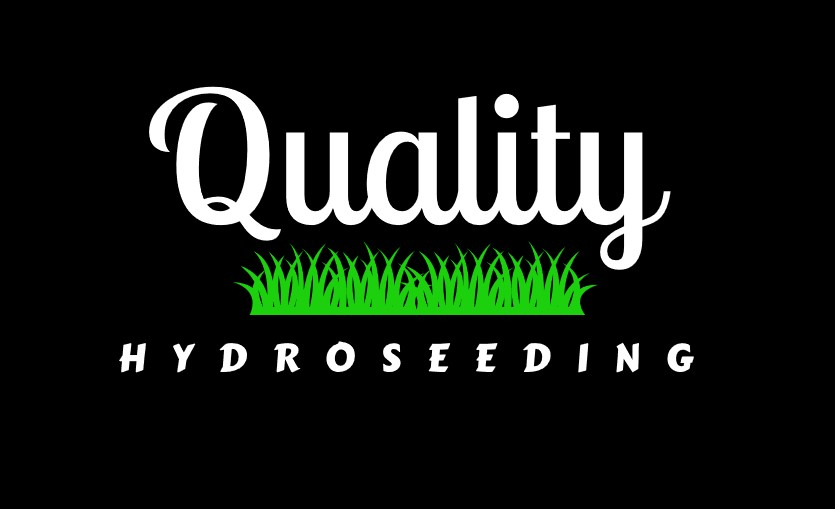Frequently Asked Questions
Q: Can Hydroseed be sprayed over an existing lawn?
A: The short answer is yes, but we advise against it the majority of the time and here’s why.
Q: Can you Hydroseed in shady areas?
A: Our standard hydroseed mix contains a time tested blend of our region’s hardy turf grasses that do well in full sun to partial shade (between 5-8 hrs of sun per day) and resist drought and disease. This covers the majority of our clients. However, we also have a shade mix at the same price point. This mix, although shade tolerant, still needs approx 3-4 hours of sun per day as all grasses need some sun to be rich and healthy. In high shade conditions you may find the grass thin out over time and will require overseeding. It’s just the nature of the plant. At request, we can quote a custom mix for those with specific needs like needing to match an existing established lawn, environmental concerns like native grass blends or wildflower mixes.
Q: What time of year can you Hydroseed?
A: Grasses need a ground temperature of at least 50 degrees to germinate which, here in the Northeast, gives us a growing season of typically mid-April through early October. It’s good to understand the normal expectations and challenges for each season. All considerations listed below apply to hydroseeding over freshly laid loam in a residential setting based on the meteorological calendar.
Spring (March 1st): Cold nights and gradually warming days yield a slower growth and full germination before the high heat of summer sets in and watering requirements are normal; however, weeds need to be addressed. At Quality Hydroseeding we include a seed-safe weed control fertilizer that lasts about a month. This gives the grass ample time to grow and establish itself. Afterwards, seed-safe fertilizer can be used or hand-plucking can be implemented to control the weeds through the summer months. NOTE: Even a newly established lawn cannot take weed-and-feed fertilizers, as they are typically too strong and can kill the young grass.
Summer (June 1st): The high heat of summer drives growth quickly, just know your watering needs will increase due to the heat. If daily highs get into the 90s, this means adding a fourth cycle to your daily routine for the first month of growth. Weeds need to be addressed as mentioned in the Spring seeding section, but the summer adds another problem, Humidity. While the increased watering is necessary due to the heat, the humidity of summer can prevent evaporation at ground level which increases the chances of fungus growth which can ultimately kill the grass in expanding patches. It isn’t always a complete fail-safe, but we recommend adding a fungicide in the mix for summer seeding to reduce the chances of grass-killing fungus due to the increased humidity.
Fall (September 1st): Fall is the best time for new grass planting for a couple of reasons. First, there is less weed competition as most of the airborne weed seeds are almost all out of season. Second, the warm days with cool nights promote good growth. The only downside to Fall seeding is the window is short. Seeding SHOULD be done by the second week of October. This will give the seed about four weeks to germinate and establish itself before the average ground temps drop below 50 degrees, growth stops and the grass goes dormant for the winter.
Winter (December 1st): As long as there’s no snow on the ground and the soil is prepped, hydroseed can be applied but nothing will grow until the average ground temps rise above that 50 degree mark. It’s not recommended for optimal growth, as you can expect seed loss from the swings of freeze and thaw over the winter months.
Q: Is Hydroseed safe for my children and pets?
A: Yes. Our hydroseed is a mix of water, seed, fertilizer and industry-specific wood fiber mulch, all perfectly safe. You’ll find the aesthetically pleasing green dye of the mulch will dilute after a week or two but fear not, it’s non-toxic, and your new growth should be on it’s way to replacing the dye with a permanent green turf. We know there may be times you cannot keep your four-legged family members off the hydroseed
Q: Will I get a lot of weeds with Hydroseeding?
A: There are no weed seeds in the hydroseed mix. More often than not, weed seeds are already present in your soil or the loam that was obtained from your local supplier.
To combat this we include a pre-emergent fertilizer in our mixes from Spring through August when the weeds are most prevalent, at no extra charge. In late Summer and Fall the few weed seeds remaining don’t put up much of a fight and don’t last long once the cold nights set in.
